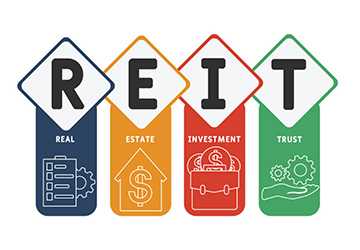Top 10 Strategies for Successful Real Estate Investing
Property management includes buildings, land, natural resources, and any entitlements linked to these assets. It is a material item with an inherent value that can produce revenue via dividends or rental returns. Purchasers might engage in land development projects, buy houses, or invest in business premises, which are some of the techniques available to them for engaging in the housing market.

We will review ten housing dealing ideas to help you reach your monetary goals. This article is a beneficial resource for anyone wishing to get involved in land and generate money, regardless of experience level.
1. Buy and Hold
This business approach involves making a long-term purchase—generally for ten years or longer—and holding onto the property. This method aims to benefit from the gradual increase in property value while earning passive income through rental payments. It is possible to generate both passive income and long-term wealth by using this method.
It can also be used as insurance against inflation and provides diversification from other types of holdings. Since housing is an opaque spending, selling it quickly in an emergency could be difficult. Renting out a property involves hazards such as client default, vacant periods, and property damage, all of which call for careful oversight.
2. Home Infiltration
This technique, known as residence hacking, involves buying a multi-unit building, living in one, and renting out the other units. By combining the ability to rent a property with this method, an owner can lower their housing costs and improve cash flow. Increasing rental income and reducing housing costs could free up funds for other expenditures or spending.
With less down payment and the option to use FHA or VA loans, it can also be an excellent approach for individuals to get started in housing trading.
3. Flipping
Flipping is an equity trading method in which a buyer acquires an apartment to make quick repairs and sell it for a profit. The objective is to buy an asset for less than it is worth, perform the required repairs or enhancements, and then sell it for more money.
It provides a significant return on investment in a brief amount of time. Advantageous flips have the potential to yield substantial gains and offer instant cash flow. Flipping allows shareholders to use their imagination, design, and remodelling expertise.
4. BRRRR
Buy, Rehabilitation, Renting, Refinancing, and Repeat, or BRRRR, is a prevalent financial spending approach that involves purchasing a distressed property, making necessary improvements, leasing it out, restructuring it to extract equity, and then using that wealth to buy additional buildings.
It is possible to use little to no down payment to amass a portfolio of rental homes. The plan also provides the chance to increase assets over time through gains in property and create passive earnings through rental fees.
5. Live-In Rentals
It involves merely staying in a house that will eventually be rented out. In simpler terms, the house serves as your primary residence and an alternative rental. However, it differs from residential hacking in that you are not renting the place while living there. A live-in flip is when the owner purchases a house, moves in, makes repairs, and then waits several years to resell it at a profit.
6. REITs
REITs typically buy premises that generate revenue, including retail stores or apartment complexes. These kinds of assets usually bring in money each month from rent, and REITs provide the owners with dividends totalling ninety per cent of that money.

Through this property ownership approach, consumers can participate in an expertly managed collection of residential and commercial assets; this is an excellent choice for traders interested in housing but possessing no physical assets.
7. Crowdfunding
Crowdfunding uses funds collected from multiple buyers to cover the cost of acquisition, expansion, or rehabilitation. A financier connects with other financiers and commercial developers via a spending platform. Financers can use the platform to determine which trading ideas best suit their requirements.
8. Wholesaling
The wholesaling procedure is finding and acquiring the asset for a below-market price, subsequently assigning or offering the agreement to another buyer or owner for a profit, all without considering property ownership. In other words, the price you estimate to the potential purchaser or buyer includes your commission, which is essentially your finder's fee, and the land charge.
9. Projects for Development
Development entails purchasing land or existing properties and commencing construction or renovation operations to create value. Renovations of single-family homes to expansive commercial developments are examples of development projects.
Lenders must conduct exhaustive market surveys, feasibility analyses, and risk analyses to guarantee sustainability and financial gain for development projects. Although development has the potential to yield large rewards, it also comes with a higher risk profile, more significant delays, and an extensive upfront cost.
10. Individual Loans
Private lending allows a borrower, usually an appraiser or buyer, to receive a loan from a financier to fund an asset or project. The asset or project may be pledged as collateral, and the financier gets interest on the loan. It provides an opportunity for large profits at comparatively low risk.
Private lenders do not need to manage the asset to generate predictable, steady income from interest charges. Since the owner chooses the borrower and the loan terms, private financing can also give them more control over their financial trading.
Conclusion
To sum up, various trading approaches are available, each with advantages and disadvantages. Knowing these tactics and carefully weighing your options, you can select the approaches that best suit your interests and aims. If managed correctly, buying and selling assets has proven profitable for creating long-term wealth and reaching financial independence.





